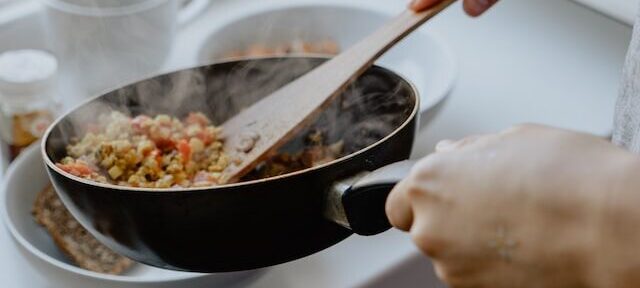The world of culinary arts is a canvas where chefs wield their creativity, transforming raw ingredients into masterpieces that delight the senses. Behind every mouthwatering dish lies a symphony of cooking techniques, each contributing its unique notes to create a harmonious culinary experience. In this article, we will embark on a journey through the diverse landscape of cooking techniques that elevate the art of gastronomy.
- Sautéing: The Dance of Quick Heat
Sautéing is a technique that involves cooking food rapidly over medium-high heat in a small amount of oil or fat. The quick, intense heat caramelizes the exterior of ingredients, creating a delightful contrast between a crisp outer layer and a tender interior. Commonly used for vegetables, meat, and seafood, sautéing preserves the natural flavors and nutrients while imparting a rich, golden hue to the dish.
- Grilling: Harnessing the Elemental Flames
Grilling is an ancient cooking method that has stood the test of time. Whether over an open flame or on a modern grill, this technique imparts a distinct smokiness and char to ingredients. Beyond the mouthwatering aroma, grilling creates tantalizing grill marks and enhances the natural flavors of meats, vegetables, and even fruits. It’s a celebration of simplicity and the elemental connection between food and fire.
- Braising: Tenderizing with Time and Moisture
Braising is a slow-cooking technique that combines both dry and moist heat. Typically used for tougher cuts of meat, the process involves searing the ingredients at a high temperature, followed by a slow simmer in a flavorful liquid. This extended cooking time allows the collagen in meat to break down, resulting in fork-tender textures and a sauce infused with layers of taste. Braising exemplifies the marriage of patience and precision in the culinary arts.
- Sous Vide: Precision in a Vacuum-Sealed Pouch
Sous vide, a French term meaning “under vacuum,” has revolutionized the culinary landscape. This technique involves sealing food in a vacuum-sealed pouch and cooking it in a precisely controlled water bath at a low, consistent temperature. The result is evenly cooked dishes with perfect doneness from edge to edge. Sous vide cooking preserves the natural flavors and nutrients while allowing for an unprecedented level of precision in the culinary world.
- Baking: The Alchemical Transformation of Dough
Baking is a magical fusion of science and artistry, transforming simple ingredients like flour, water, and yeast into an array of delicious bread, pastries, and desserts. Controlled heat in an enclosed environment causes dough to rise, creating light and airy textures. The browning of sugars during baking adds layers of complexity to the flavor profile. Whether it’s the crusty exterior of a baguette or the delicate layers of a pastry, baking is an ode to the transformative power of heat.
Conclusion:
The art of cooking is a multifaceted tapestry woven with diverse techniques, each contributing a unique brushstroke to the canvas of culinary creation. From the quick sizzle of sautéing to the slow alchemy of braising, these techniques showcase the mastery of chefs who navigate the realms of temperature, time, and creativity. As we savor the results on our plates, let us appreciate the symphony of cooking techniques that turns simple ingredients into extraordinary culinary experiences.
